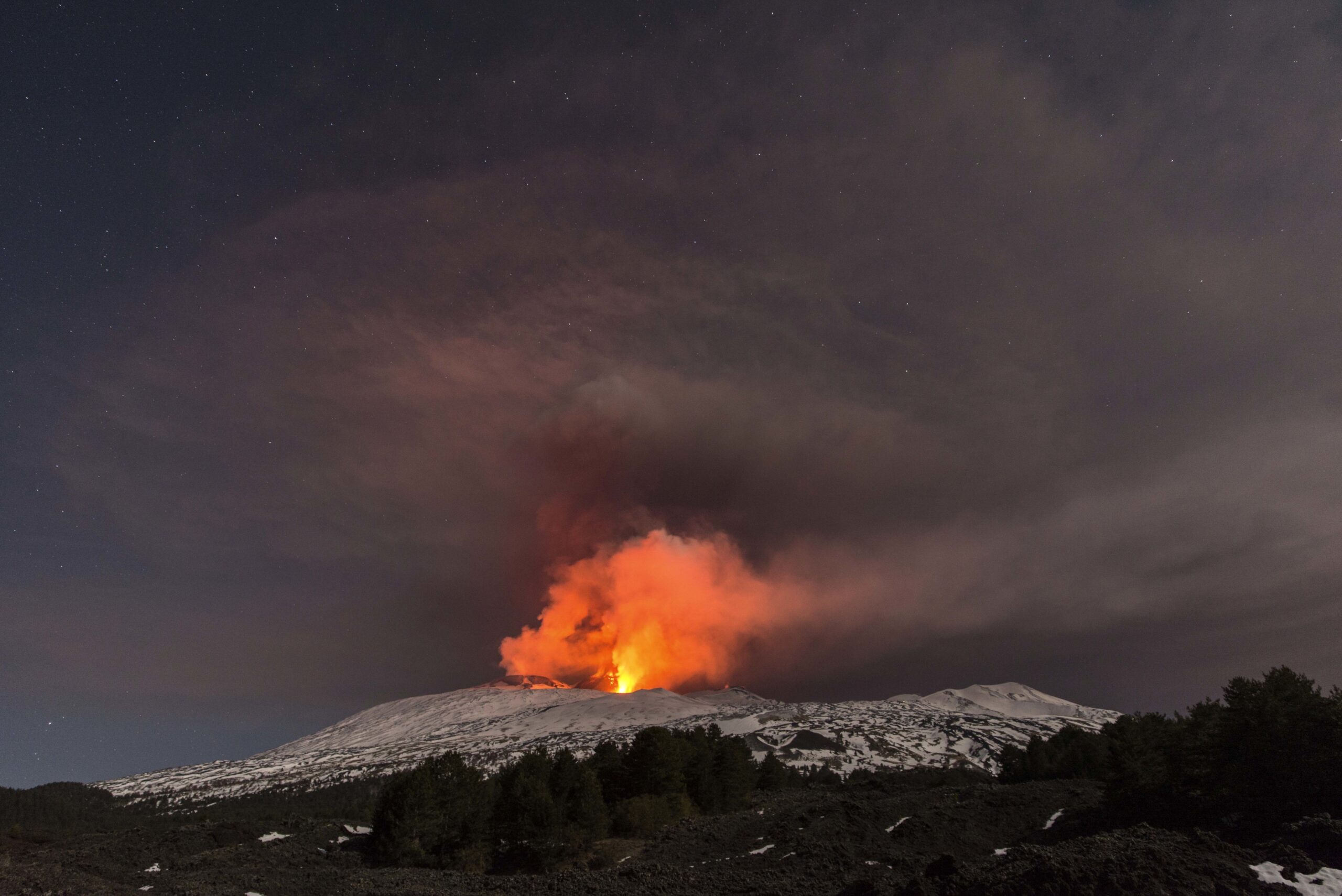There is no owner’s manual for planet Earth. It would be convenient if there were, because our planet’s climate system works like a massive engine — one that humanity is currently blindly tinkering with by pumping carbon dioxide into the atmosphere. We are now operating at CO2 levels not seen for at least 800,000 years. Scientists faced with the difficult task of trying to predict how these elevated CO2 levels are going to affect life on Earth have recently turned to one of the only forces as powerful as the climate engine: volcanoes.
Experiments to understand how ecosystems might respond to climate change are difficult to perform because of the sheer scale of the problem. One approach has been to use open-top chambers, where CO2 is essentially trapped in a big plastic bubble, which can be as small as a meter in diameter or as large as a greenhouse, so that scientists can measure how the plants and animals inside adjust to high-CO2 conditions. The famous Biosphere 2experiment in Arizona took this to the extreme by trading the plastic chamber for a three-acre greenhouse. Information gleaned from these types of experiments is then fed into computer models that spit out predictions of how increased CO2 levels will affect forests and other vegetation, along with the animals that depend on them
But open-top chambers aren’t practical for understanding long-term effects of CO2 across larger spatial scales than a greenhouse, forcing scientists to get creative. The answer they came up with? Volcanoes.
More than 200 active volcanoes dot our planet’s tropical belt, many of them blanketed in lush tropical forest. The liquid rock underlying these volcanoes continuously emits gases, a significant fraction of which is CO2, through cracks in the earth. Because the forests growing on volcanoes are consistently exposed to high CO2 levels, an international team of scientists from NASA’s Jet Propulsion Laboratory,Occidental College, and the National University of Costa Rica had an idea: Perhaps they could use these forests as a natural laboratory for studying how climate change will affect tree physiology.
The results from their study were published this month in the journal Biogeosciences. The team, led by Robert Bogue and Florian Schwandner, earth scientists from McGill University and NASA’s Jet Propulsion Laboratory, opted to focus on three tree species — Buddleja nitida (butterfly bush), Alnus acuminata (alder), and Oreopanax xalapensis — commonly found in the forests on the Turrialba and Irazú volcanoes in Costa Rica, which have been active for 75,000 and 3,000 years, respectively. Similar studies on pine trees and smaller plants in Yellowstone National Park, which has volcano-like geysers and hot springs, found that increased CO2 has altered levels of rubisco in plants. Rubisco is the most plentiful enzyme on Earth and a key molecule in photosynthesis, so they knew they would probably find some anomalies in how tropical trees reacted to extra CO2 as well.
First the researchers bored holes in the trunks of 31 trees from the three tree species, extracted narrow wood cores, and tested how much CO2 the trees had incorporated into their stems as they grew. Carbon dioxide emitted from volcanoes is a heavier isotope than atmospheric CO2, meaning that it also has a slightly different chemical fingerprint. What they found was not surprising – the amount of heavy CO2 a tree stored was related to the amount of CO2 flowing out of the soil at the tree’s location over decades of growth. In other words, these trees are capable of absorbing and storing excess carbon for a long time.
This finding is – to some extent – good news for us. As CO2 has built up in the atmosphere over the past decades, many tree species have also been growing faster. By taking carbon out of the atmosphere and locking it away in their bodies, trees have partially been making up for the CO2 we continue to spew from our power plants, tailpipes, and factories. But this isn’t enough to save us from the worst of climate change, and most scientists predict that this so-called carbon fertilization effect won’t persist forever. Shortages of other resources, like nitrogen, will eventually begin to limit tree growth.
Bogue, Schwandner, and their colleagues also looked for short-term impacts of elevated CO2 on trees by measuring leaf stress, leaf chlorophyll content, and gas flow through tiny pores in the leaf called stomata. They found that the relationships between soil CO2 levels and these leaf variables depended mainly on which of the three species they were looking at. One species, the alder, generally performed better in areas with higher soil CO2. But leaves of the other two species showed no or even slightly negative responses to elevated CO2.
Given that tropical forests are some of the most biodiverse ecosystems on the planet, it is clear that understanding whether CO2 stresses or helps individual trees will require a lot more investigation. But this study suggests that measuring how past CO2 emissions from volcanoes has affected entire forests could help us predict where we are headed as Earth’s climate changes.
The research also revealed that the connection between trees and volcanoes is not a one-way street. Remarkably, trees can tell us as much about volcanoes as volcanoes tell us about trees. Carbon isotope data from tree cores – both living trees and dead ones preserved in the volcanic zone – can help scientists reconstruct historical CO2emissions from these volcanoes. And, a truly mind-blowingsentence in the paper’s introduction suggests that it might even be possible to predict future volcanic eruptions by monitoring tree greenness (what scientists call productivity) from space.


